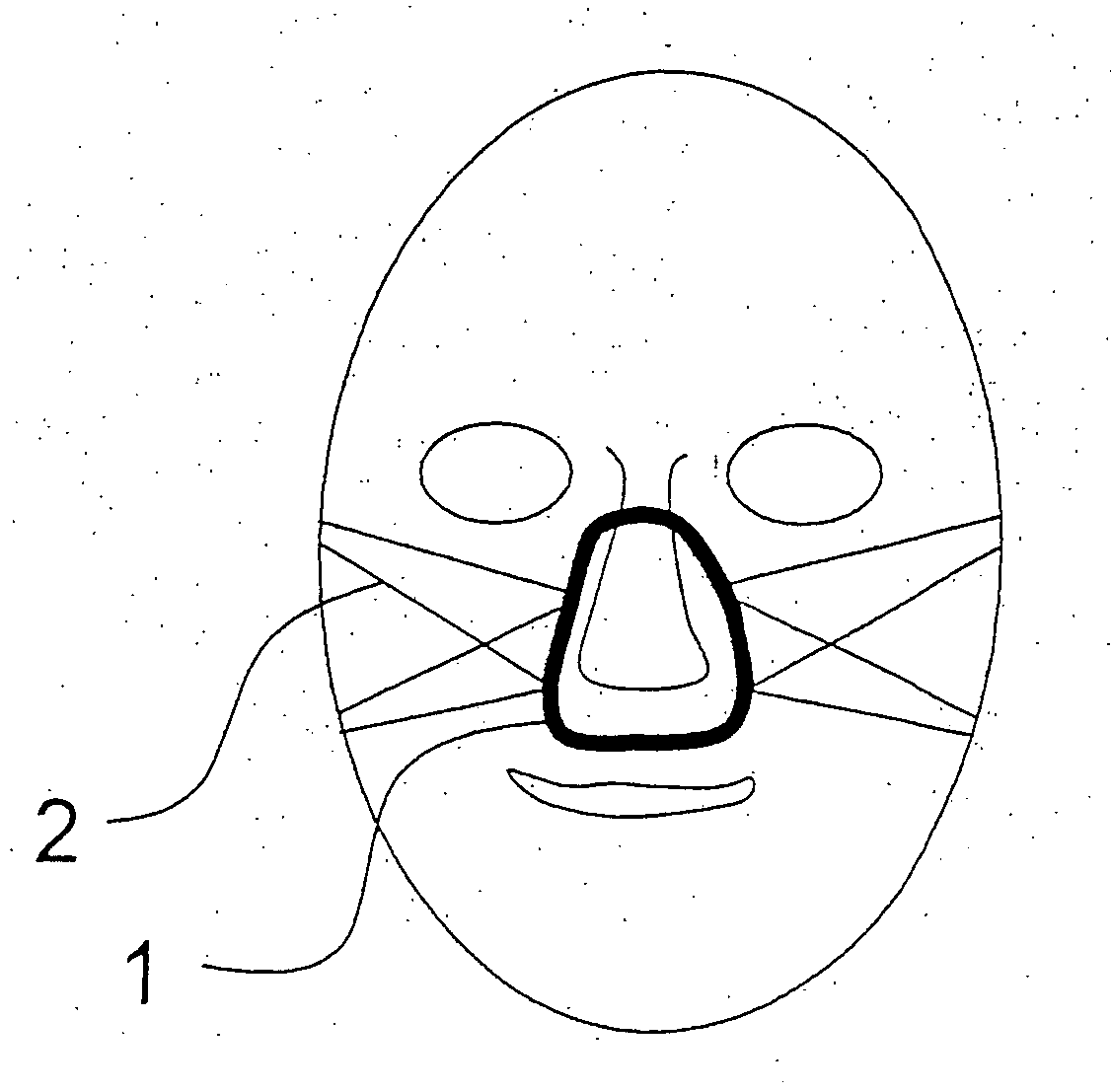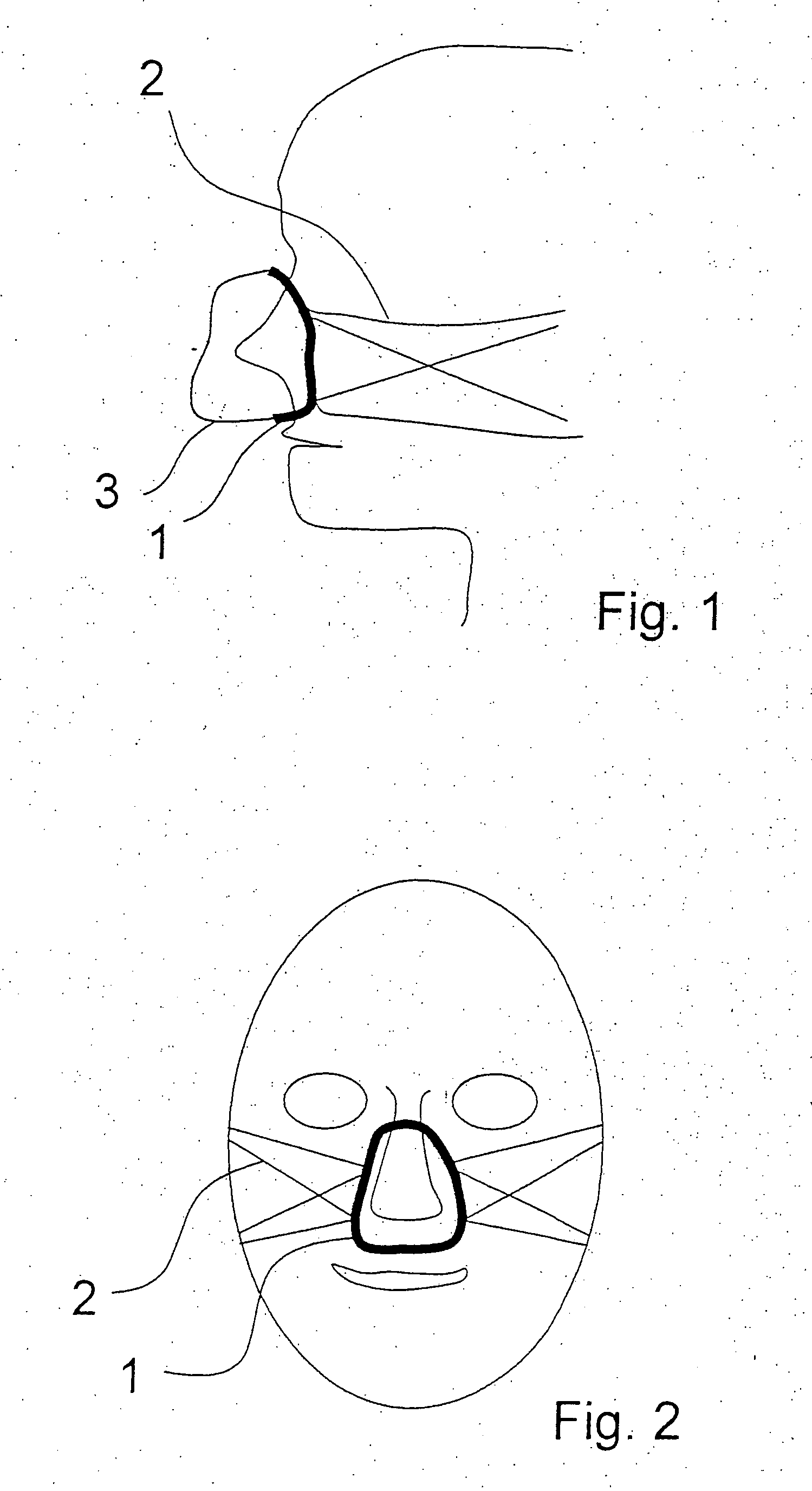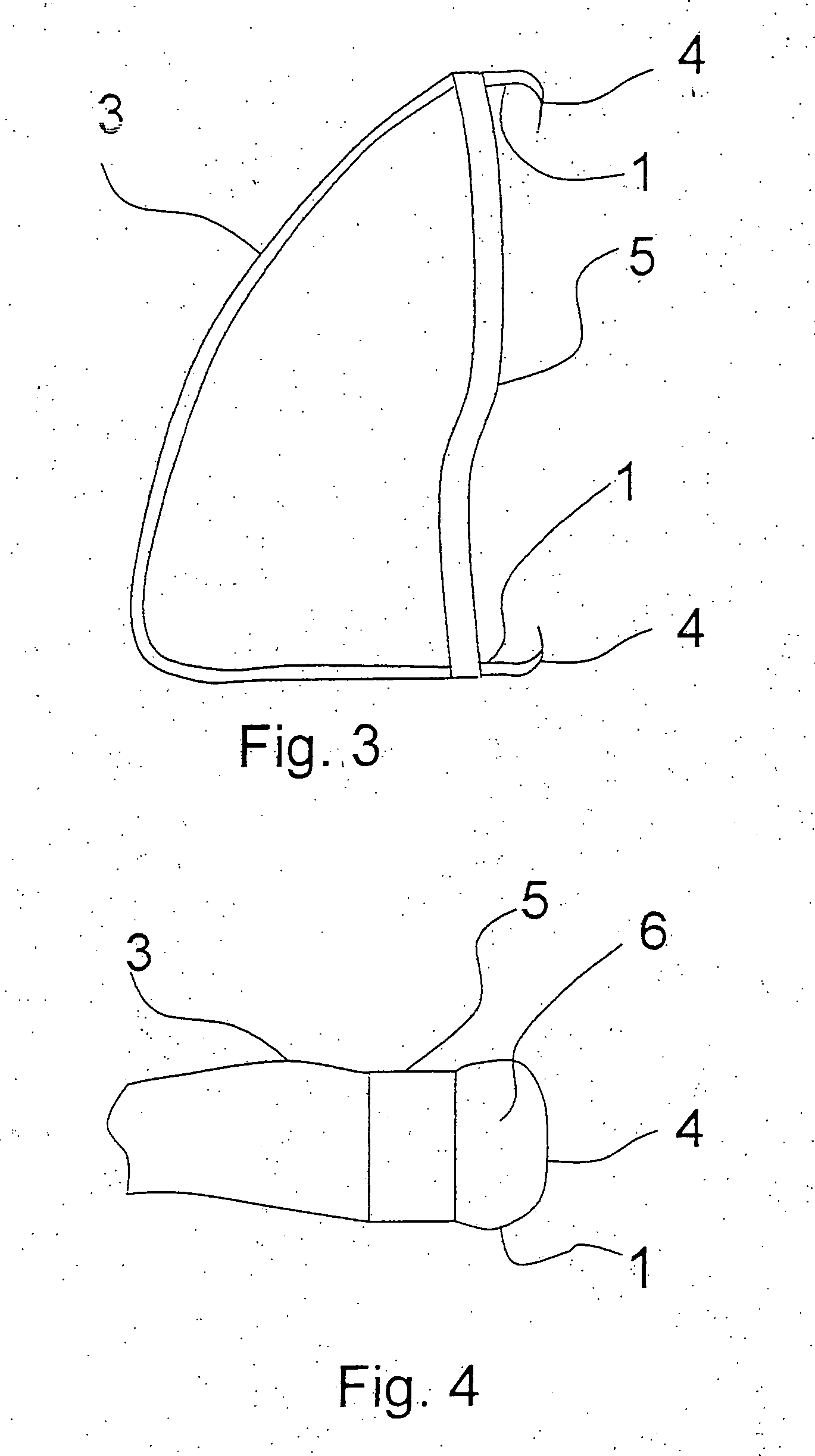Breathing mask with an adhesive seal
a technology of masks and adhesive seals, applied in breathing masks, breathing protection, protective garments, etc., can solve the problems of needless load, leakage in other areas of the contact line, and formation of zones with greatly different pressing pressures, so as to prevent the development of pressing pressure peaks on the user's face, the effect of great wearing comfor
- Summary
- Abstract
- Description
- Claims
- Application Information
AI Technical Summary
Benefits of technology
Problems solved by technology
Method used
Image
Examples
exemplary embodiment 1
[0034] Referring to the drawings in particular, in exemplary embodiment 1, FIGS. 1 and 2 show two views of a nasal CPAP mask. The mask is equipped with an adhesively acting seal 1, designed here as a silicone lip coated with an adhesive gel. A strap 2 acting as a holding device for fixing the mask on the head is likewise present and transmits part of the needed tensile force to counteract the overpressure in the interior space of the mask body 3.
[0035]FIG. 3 shows a similar mask, whose mask body is equipped with a circumferential silicone lip 1, part of which can be folded over such that it acts as a bonding surface 4. The silicone lip 1 is fastened to a moldable frame 5, by which adaptation to the shape of the face can be performed. The frame 5 forms at the same time the closure of the mask body 3.
exemplary embodiment 2
[0036] In exemplary embodiment 2, FIG. 4 shows a breathing mask according to the present invention with a specially designed seal to facilitate the removal of the mask from the face. It includes a possibility of thermally affecting the adhesive force in order to make removal possible at reduced adhesive force. The seal 1 is designed as a flexible tube for this purpose. The outer side of this flexible tube is designed as a bonding surface 4 and is wetted with an adhesive gel, which develops a weak adhesive force below a temperature of 25° C. If this seal is pressed onto the face, sufficient adhesive force will develop in a short time due to the rising temperature. To remove the mask, cool water is sent through the interior 6 of the flexible tube. If the temperature of the bonding surface drops below 25° C. as a result, the mask can be removed from the face in a simple manner because of the reduced adhesive force. The cooling can be brought about by flushing with cool water within the...
exemplary embodiment 3
[0037] In exemplary embodiment 3, FIG. 5 shows a breathing mask according to the present invention with a specially designed seal to facilitate the removal of the mask from the face. It includes a possibility of changing the cross section of the seal 1. The seal 1 is designed as a flexible surface between two webs 7, 7′ for this purpose. If a pressure is admitted into the cavity 8 formed or the volume is sealed, the bonding surface 4, which is coated with an adhesive gel, can be placed on the face for bonding. To remove the mask, the cavity 8 can be evacuated by means of a syringe or a bellows, as a result of which the adhering surface seeks to assume a position 4′ that facilitates the removal of the mask from the skin surface.
PUM
 Login to View More
Login to View More Abstract
Description
Claims
Application Information
 Login to View More
Login to View More - R&D
- Intellectual Property
- Life Sciences
- Materials
- Tech Scout
- Unparalleled Data Quality
- Higher Quality Content
- 60% Fewer Hallucinations
Browse by: Latest US Patents, China's latest patents, Technical Efficacy Thesaurus, Application Domain, Technology Topic, Popular Technical Reports.
© 2025 PatSnap. All rights reserved.Legal|Privacy policy|Modern Slavery Act Transparency Statement|Sitemap|About US| Contact US: help@patsnap.com



